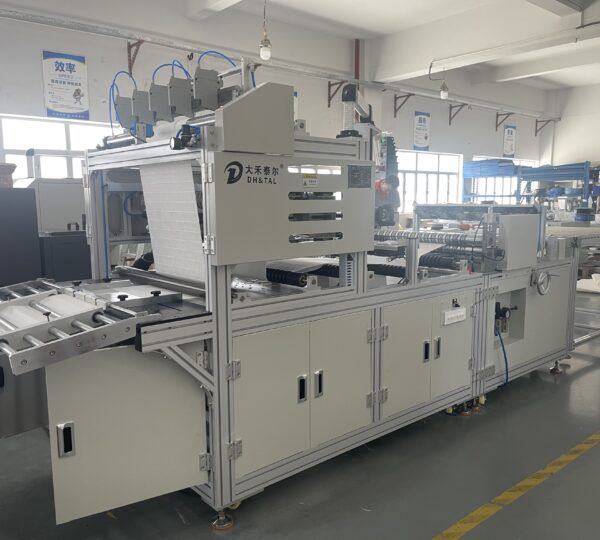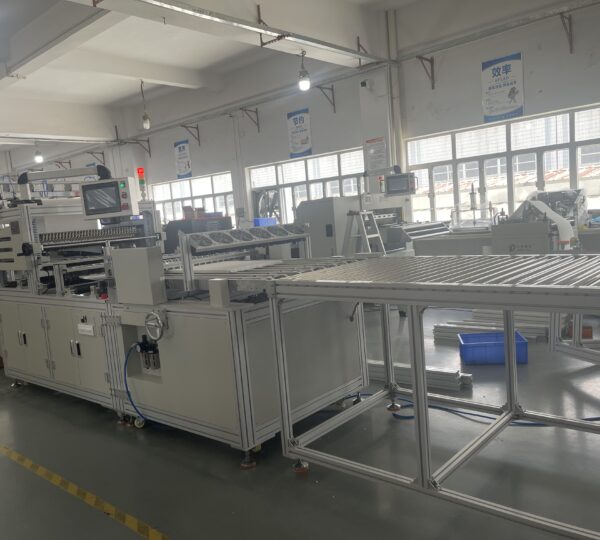A filter glue application machine, also known as an automatic glue injection filter production line, ensures the precise positioning of the filter element during glue injection, thereby achieving optimal sealing and structural integrity. In actual production, they often encounter various operational issues, such as power supply abnormalities, cylinder failures, glue dispensing problems, and sensor alarms, which can lead to production delays, quality defects, and increased scrap rates if not promptly resolved. In response to these problems, we summarize several methods for handling faults to help maintenance technicians quickly diagnose and resolve issues, thereby maintaining stable output and product quality in filter glue coating machine production lines.
Power supply abnormality diagnosis of the filter glue application machine
One of the most basic checks of filter glue application machines is to verify the integrity of its electrical system. If the line loses power, the cycle behaves abnormally, or it operates intermittently, first confirm that the main power supply maintains a stable 220V AC. Use a calibrated voltmeter to verify that the voltage of all three phases is within ±5% of the nominal voltage and that there is no obvious phase imbalance. Check the main switch to ensure you set it to the “on” position, and confirm that you have fully released or unlocked the emergency stop button. Next, inspect FUS1 to determine whether it has blown the fuse or been installed improperly.
Also, be sure to replace it with the correct voltage and current rating specified in the machine manual. Also, check for loose or corroded terminals in the main distribution board and use an infrared thermal imager to detect hot spots indicating poor connections.
Cylinder Action and Pneumatic System Inspection for Filter Glue Application Machine
When the cylinder motion on the filter glue application machine is unstable, hysteresis, slow rebound, inability to extend, or inconsistent stroke length, focus on checking the pneumatic supply and control valves. First, ensure the plant’s air compressor is operating correctly and delivering clean, dry, compressed air at the recommended pressure. Check the machine’s pressure regulator and pressure gauge to ensure that the setpoint is correct and stable under load. We can use soapy water to check all pneumatic lines for kinks, leaks, or blockages by looking for escaping bubbles.
At the same time, you should also verify that the corresponding proximity sensor or mechanical limit switch aligns correctly and that no adhesive or debris has accumulated, as misaligned sensors may prematurely shut down the cylinder drive. You can also use an ohmmeter to check whether the solenoid valve coil conducts electricity and listen for a characteristic click when the coil receives power. If no sound is heard, replace the coil or the entire valve group. Finally, fix any loose electrical connectors to the solenoid valve to ensure reliable transmission of PLC signals.
Irregular glue coating and distribution problems
When the glue coating is abnormal, it is usually caused by the incorrect configuration of the drive and distribution parameters of the filter glue applicator. First, we need to check the output frequency and voltage settings of the inverter to ensure that they match the nameplate specifications of the pump motor. Because incorrect frequency can cause pump speed changes and inconsistent pressure. Next, adjust the glue feed rate through the control interface and fine-tune the nozzle hole size of the glue gun. At the same time, you also need to check the backflow valve (safety valve) setting on the pump manifold.
If you open it too wide, the system pressure will drop, reducing the flow. If you close it too tightly, the back pressure will damage the seal. So, it is necessary to flush the hose with solvent regularly to remove polymer residues and prevent blockage. Of course, you also need to check the glue reservoir and confirm that the agitator is running continuously to prevent glue precipitation. Fine-tuning these parameters and maintaining a clean bond path can restore a smooth, uniform bead of glue.
Material Alarms & Sensor Verification
A “No Material” alarm on a filter glue application machine can cause production to stop abruptly, resulting in missed deadlines and reduced productivity. This alarm typically indicates a problem with the No Material sensor located downstream of the glue feeder. First, visually inspect the sensor lens for adhesive buildup, dust, or debris. Carefully clean it with isopropyl alcohol and a lint-free cloth to restore optical clarity. Next, test the sensor output signal using the multimeter diagnostic screen. If no switching occurs with the material present, replace the sensor module. Also, verify that the sensor mounting bracket is secure and that the detection gap is within the manufacturer’s specifications. Also, confirm that the feeder’s hopper level sensor is accurately reading the material level and recalibrate if necessary. By ensuring reliable sensor feedback, you can prevent false alarms, avoid unnecessary downtime, and keep your filter applicator running smoothly.
Glue Break Position Detection & Calibration
Precise glue cut-off positioning relies on accurate detection of the color mark or registration sensor. If the filter glue applicator’s start and end points do not align correctly, check whether you have aligned, focused, and set the color mark sensor’s sensitivity properly. Also, clean the sensor optics and ensure that the detection distance meets the data sheet specifications, which is usually between 10 and 20 mm. Test the performance of the inkjet printer. Clogged nozzles or low ink pressure can cause uneven or blurred markings, which can cause the sensor to miss prompts. Perform a printhead cleaning cycle on the printer, verify that the ink viscosity is correct, and replace the ink cartridge if it is near the end of its life. After maintenance, recalibrate the sensor by running several test cycles to ensure consistency in mark detection under different filter media colors and reflectivity.
Ensure Equipment Proper Operation
To maintain the optimal performance of the filter applicator, a combination of proactive maintenance and systematic troubleshooting is necessary. The power supply voltage, main switch, emergency stop, and fuses should be checked regularly to prevent simple yet serious failures. Verify the health of the air compressor, regulator settings, hose condition, and solenoid valve function to ensure reliable cylinder drive and other operations. By following these methods, downtime can be minimized, and product quality can be improved.




